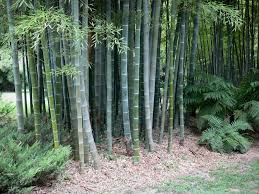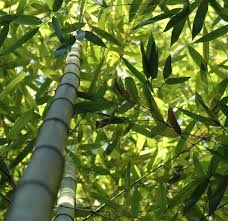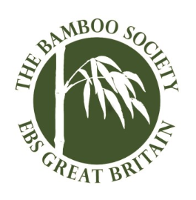

.
..
.
.
.

INBAR IS AN INTERGOVERNMENTAL ORGANISATION ESTABLISHED IN 1997 BY TREATY DEPOSITED WITH THE UNITED NATIONS AND HOSTED IN BEIJING, CHINA
INBAR is the only intergovernmental organisation headquartered in China. It currently has 42 Member States, comprising most of the bamboo and rattan resource countries from the Global South. Since its creation two decades ago, INBAR has run projects and programmes in over 20 countries, and provided capacity building and awareness raising on the productive use of bamboo and rattan in over 80 countries.
Today, INBAR’s global programme is coordinated from its secretariat in Beijing, and put into action through country and regional offices in China, Ecuador, Ethiopia, India and Ghana. INBAR fields an international team of professionals, experts in bamboo and rattan, forestry and natural resource management, ecosystem services, socio-economics, capacity building and knowledge sharing.
All INBAR’s work is done in partnership with countries and development partners to support their efforts to develop bamboo and rattan, bringing four key benefits:
1. Improved livelihoods for rural areas and their communities
2. Increased national economic development
3. Better environmental security
4. Powerful tools to adapt to and mitigate the effects of climate change
SUPPORTING THE SUSTAINABLE DEVELOPMENT GOALS (SDG)
Guided by its 2015-2030 strategic plan, INBAR’s priority is to work with countries to focus the use of bamboo and rattan as strategic resources that support sustainable development and their green economy action plans. Its strategy and performance contribute directly to six sustainable development goals (SDGs):
1. SDG 1:End poverty in all its forms
2. SDG 7:Provide affordable, sustainable and reliable modern energy services for all
3. SDG 11:Access to adequate and affordable housing
4. SDG 12:Efficient use of natural resources
5. SDG 13:Address climate change
6. SDG 15:Protect and restore terrestrial ecosystems.
STRATEGIC PLAN 2015-2030
INBAR’s priorities, defined under the Strategic Plan 2015-2030, are to promote the promise of bamboo and rattan as practical and sustainable solutions, to the producers and users of these plants.
To do this, INBAR targets its support to countries in four priority areas:
Policy shaping
to provide affordable, sustainable and reliable modern energy services for all
Representation and advocacy
to coordinate inputs on bamboo and rattan from a growing global network of members and partners, and to represent Members’ needs in the global policy arena
Knowledge sharing and learning
to exchange and communicate lessons learned wideley, providing training and raising awareness of the relevance of bamboo and rattan as strategic resources and commodities that directly support a number of the Sustainable Development Goals, Aichi Targets, REDD+ and other global, regional or national frameworks
Action research and country support
to promote adaptive research and on-the-ground innovation by promoting pilot best-practice case studies, and supporting the upscaling of best practices and innovations across INBAR Member states and with others
Now that we are at the crossroads where climate change and environmental disasters are affecting millions around the globe it never has been more imperative than now to utilise what we already have natural solutions. One of the best examples of this is the humble bamboo which sustains the environment, helps support communities and restores degraded land.
Closely knitted to the theme for this World Environment Day “Go Wild for Life” bamboo complements this efficiently by offering nutrition and shelter to iconic endangered species like the Mountain and Lowland Gorillas, the Golden Lemur and the Bale Monkey. Bamboo not only supports the natural ecosystem but also helps address some key United Nations Sustainable Development Goals (SDG) SDG 1, SDG 7, SDG 11, SDG 12, SDG 13, SDG 15.
Even though 30 million hectares of bamboo is distributed across Asia and the Pacific, Australasia, Africa, the Americas and the Caribbean (data from FAO FRA 2010) it is still largely forgotten. This is due to a number of issues including a lack of awareness, technical capacity, policy support and conducive finance environments. A majority of the countries have yet to tap into the incredible potential of this under-utilised resource
that as of yet can be used to create approximately 10,000 different products!
This is where the assessment “World Checklist for Bamboos and Rattans” (Free to Download) can play a vital role. Supported by the Kew Royal Botanic Gardens, INBAR with the help of expert taxonomists on bamboo and rattan will compile a checklist that offers a comprehensive list of known species (1642 known species) and locations worldwide. Shedding light on how much bamboo and rattan exist in the world, location, characteristics, requirements and options for improving the propagation
and creation of plantations this living resource will be continually updated. The checklist along with the Global Bamboo and Rattan Atlas will serve as a fundamental biodiversity resource for anybody with interest.
Bamboo and the World a strategic resource
Bamboo for Climate Change Mitigation Bamboo plays multiple roles in sequestering carbon. It helps avoid fossil fuel use by offering an alternative, highly renewable source of biomass energy, both as a substitute for wood fuel and charcoal and fossil fuels in power generation. The carbon stored in Chinese bamboo forests is projected to increase from 727 million tonnes in 2010 to 1,018 million tonnes in 2050, or by nearly 40% in 40 years.
Bamboo for Restoration Bamboo is integral to many natural and agricultural ecosystems in and around the tropics. It is useful for restoring degraded lands for several reasons. It thrives on problem soils and steep slopes that are unsuitable for other crops. It is an effective windbreak, and its sturdy rhizomes and roots regulate water flows and prevent erosion.
Bamboo for Renewable Energy Extremely versatile as a resource bamboo can be utilised to produce wood fuel and charcoal for cooking and heating. Incredibly it can also be used to generate electricity through the use of biomass gasification technology. The calorific value of bamboo charcoal is quite similar to that of wood charcoal however it produces significantly less pollutants. Through the support of its various projects INBAR has
been able to show that utilisation of bamboo charcoal helps reduce the pressure on forest resources.
On the World Environment Day 5th June we should take a moment to recognise the value of this untapped resource. Bamboo can play a crucial role in tackling the detrimental impact on the environment. Through sustainable utilisation we could potentially support the recovery of the environment using one of the most versatile and incredible natural solutions we have bamboo. Think Bamboo!



